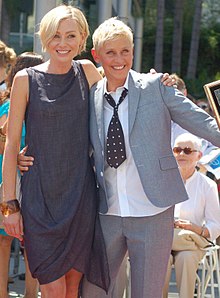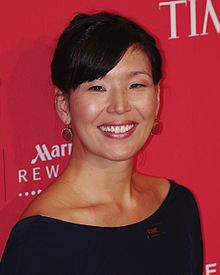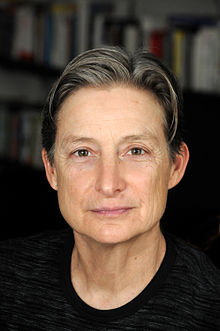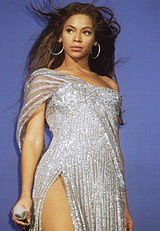Ten Episodes! Whoo! Glad your still here. Today will be a little different and Emily tried to really stretch the 10 thing and I did what has occurred in the last 10 years for women. Enjoy! ~Kelley
- Photo from Encyclopædia Britannica
Saint Hildegard of Bingen
Born: 1098 Died: 1179
What they did: Christian mystic, visionary, and first sexologist?
Facts:
- In 1098, Hildegard was born as the 10th (and final) child to a noble family and therefore offered by her parents as tithe (or giving one tenth) to the church when she was 8 years old.
- Giving your 10th child to the church was a common practice at the time. This may have also helped her parent’s politically.
- As a child, Hildegard was sickly and experienced visions. This may have also contributed to their decision to give her to the church.
- During her time in the church, she was taught for 10 years by the holy woman Blessed Jutta.
- Together, Hildegard and Blessed Jutta created a close nit and growing community of women in a male dominated monastery.
- Jutta also taught Hildegard to read and write and they would work together in the garden, recite psalms, and tend to the sick. Hildegard studied music.
- After 10 years of instruction, at 18 years old, Hildegard became a Benedictine nun.
- When Blessed Jutta died in 1136, Hildegard was elected as magistra or head teacher by her fellow nuns.
- She was also offered a position as a Prioress by the monastery’s Abbot. This would have meant she would serve under him. Instead, Hildegard, wanting more independence for herself and the other nuns, and asked that the Abbot allow them to move from the monastery to a temporary dwelling where they would live in poverty.
- Hildegard came down with a serious illness which left her bedridden. She felt that the illness was God’s way of showing His disappointment in Hildegard not following the Abbot’s wishes.
- The Abbot finally relented and granted the nuns their own monastery. Stubbornness and paralyzing illness for the win!
- In 1150, Hildegard with 20 other nuns moved to the St. Rupertsberg monastery.
- 15 years later, Hildegard founded a second monastery for nuns at Eibingen.
- Back to her visions, she described these visions a “The Shade of the Living Light.”
- She would experience her visions with all five senses and said she saw all things through the light of God. The only one she shared her visions with was Blessed Jutta who in turn had told Volmar (who was the priest living at her monastery now)
- Though she experienced visions all her life, when she was 42, she experienced a vision that she felt was God telling her to write down what she saw and heard.
- However, she was still hesitant to share her visions and became seriously ill and experienced horrific visions which caused her to suffer.
- She confided in Volmar who alerted the archbishop. A committee was formed to authenticate her visions and a monk was appointed to help Hildegard record them.
- The collection of writings, known as the Scivias (Sivvy-us) or “Know the Ways” held 26 visions that ranged from prophetic and apocalyptic and covered topics about the church, redemption, and the relationship between God and humanity.
- The Scivias was split into 3 parts, reflecting the trinity and contained illustrations. She completed the 3 parts when she was in her 70s.
- Now, beyond her holy visions, Hildegard had a great love of music and composed pieces, each with original poetic text. 70 still survive.
- One of her better known works, the Ordo Virtutum or Play of the Virtues is a morality play comprised of 82 songs. While it addresses morality, it doesn’t celebrate the church making it the earliest known musical drama that is not attached to a liturgy.
- Hildegard didn’t stop there. She also wrote about medicine and science. Her scientific and medicinal writings come from her experience working in the garden with Blessed Jutta and caring for the sick along with her own independent study of the monastery library texts.
- She explored topics including psychology, physiology, and women’s sexuality, making her one of the first people to do so.
- Though a lot of her assertions were ‘unscientific’ by today’s standards, for example, she wrote that a waxing moon is good for human conception because it was also good for sowing seeds.
- Hildegard was hailed as an expert and counseled kings, emperors, and even the Pope which was mind-blowing at the time.
- Hildegard was the first person to write a description of the female orgasm from the point of view of a woman. She also advocated that sex was a beautiful and passionate act.
- SHE EVEN CREATED A MAP OF THE UNIVERSE BASED ON THE VAGINA.
- None of this was meant to go against the church. She thought people’s passion and their sexuality was an exhibition of divinity and she worked to expand understanding of sex and its ties with religion. Because the two can have a healthy relationship.
- Hildegard was a curious, open-minded, and compassionate person.
- Shortly before her death, a man who had been excommunicated from the church had died and was buried at the St. Rupertsburg Monastary. The clergy wanted to remove his body from the sacred ground but Hildegard would hear none of it, saying it would be a sin to move the man’s body as he had been reconciled to the church at his time of death.
- When Hildegard died on September 17th, 1179. Upon her death, the sisters claimed they saw two streams of light appear in the skies and cross over the room where she lay.
- Though Hildegard was one of the first people to begin the canonization process to become a saint, it actually took many attempts as the process was so long.
- For a long time, she was stuck in the beatification stage, where the church acknowledges someone has gotten into heaven and can intervene on behalf of those who pray to them.
- In 2012, Hildegard was canonized on May 10th 2012 by Pope Benedict the XVI and she was named a Doctor of the Church.
- This title signifies someone who has made significant theological contributions through research, study, or writing. This made her the 4th woman of 35 saints to receive this title.
- Her feast day is September 17th.
Highlights from the last 10 years! (condensed from the podcast)
2009
- Kathryn Bigelow was the first woman to win the Directors Guild of America Award for Outstanding Directing, for The Hurt Locker (2008).
- Elinor Ostrom was the first woman to win the Nobel Prize in Economics, and since she was American, the first American woman to do so; she shared the prize with Oliver E. Williamson.
- Jeanne Shaheen became the first woman to hold the offices of U.S. Senator and state Governor, being elected as governor of New Hampshire from 1997 to 2003 and U.S. senator for New Hampshire since 2009.
2010
- Jennifer Gorovitz was the first woman to lead a large Jewish federation in America (specifically, the Jewish Community Federation, based in San Francisco).
2011
- Angella Reid was the first female White House Chief Usher.
2012
- United Nations passes a resolution banning female genital mutilation. The terror—and, unfortunate reality—of young girls up to the age of 15 having their genitals mutilated came to a screeching halt in 2012 (at least on paper) when the United Nations called on citizens worldwide to stop the practice, which has been most common in countries throughout Asia, the Middle East, and Africa, affecting as many as 200 million girls and women. Thanks to increased awareness of this physically and emotionally scarring practice, February 6 was named International Day of Zero Tolerance.
- Janet Wolfenbarger was the first female four-star general in the U.S. Air Force.
- New Hampshire elects the first all-woman congressional delegation in U.S. history, with U.S. senators Jeanne Shaheen and Kelly Ayotte and U.S. representatives Carol Shea-Porter and Ann McLane Kuster.
2013
- Danica Patrick was the first woman to win a pole in the Daytona 500 and a NASCAR Monster Energy Cup Series race.
- Rabbi Deborah Waxman was elected as the President of the Reconstructionist Rabbinical College. As the President, she is believed to have been the first woman and first lesbian to lead a Jewish congregational union, and the first female rabbi and first lesbian to lead a Jewish seminary; RRC is both a congregational union and a seminary.
- Erika Schmidt was the first female director of the Chicago Institute for Psychoanalysis.
- General Motors named Mary Barra as its first female CEO and the first female CEO of a major automaker.
- Deborah Rutter was named as the first female president of the Kennedy Center.
2014
- Janet Yellen was confirmed by the Senate as the first woman to lead the Federal Reserve.
- The first women competed in ski jumping at the Olympics.
- Michelle J. Howard began her assignment as the U.S. Navy’s first female and first female African-American four-star admiral on July 1, 2014.
- Katie Higgins was the first female pilot to join the Blue Angels, the United States Navy’s flight demonstration squadron.
2015
- The U.S. Senate confirmed Michelle K. Lee as the Under Secretary of Commerce for Intellectual Property and Director of the United States Patent and Trademark Office (USPTO).[283] Lee is the first woman and the first person of color to lead the USPTO.
2016
- Hillary Clinton was formally nominated at the 2016 Democratic National Convention in Philadelphia on July 26, 2016, becoming the first woman nominated for president by a major U.S. political party.
- Hillary Clinton became the first woman to win the popular vote in a United States presidential election.
- Faith Spotted Eagle became the first Native American and second woman to receive an electoral vote for president, which she received from a faithless elector.
2017
- Saudi Arabia lifts ban on female drivers. Imagine being a woman in this Middle Eastern country and needing a man to give you a lift for simple errands like picking up groceries at the market or visiting a friend. Last fall, the Saudi Arabian government lifted the ban on female drivers, set to take effect in June 2018.
- India rules sex with minors illegal. A sign of the modernization of India was a Supreme Court ruling in October that deemed rape with a female under the age of 18 (even if the minor is a child bride) illegal. Further, being charged with this crime can result in a ten-year prison sentence. This ruling helps discourage the tradition of child brides and speaks to the country’s attempt to create more equal marriages.
- Lebanon repeals law that sided with male rapists. It’s hard to believe, but until last summer, a male rapist in Lebanon could be exonerated if he married his rape victim. In August, Lebanon’s Parliament finally repealed the ancient law at the urging of women’s rights activists not only in Lebanon but around the world.
2018
- Iceland requires fair pay for women. Some countries talk a good game about equal pay for women, but Iceland made it the law of the land. Earlier this year, Iceland became the first country in the world to make it illegal—resulting in a fine—to pay men and women in the same job differently. One major difference between this law and the Equal Pay Act in the United States is that the burden is no longer on the employee to make this claim. To support women in business, take your money to one of these 23 amazing shopping sites that support women.
- Gina Haspel became the first woman to be Director of the Central Intelligence Agency.
- Stacey Cunningham became the first female President of the New York Stock Exchange.
2019
- Nancy Pelosi became the first women to be reelected as the Speaker of the United States House of Representatives.
Top 10 Women of 21st Century
- Ellen DeGeneres

Portia de Rossi and DeGeneres in September 2012 From – Wikipedia
Born: January 26, 1958 (age 61)
According to a poll by Variety magazine in 2015, Ellen DeGeneres did more to influence American attitudes in regard to gay rights than any other celebrity. The talk show host came out as gay in 1997.She has authored four books and started her own record company, Eleveneleven, as well as a production company, A Very Good Production. She also launched a lifestyle brand, ED Ellen DeGeneres, which comprises a collection of apparel, accessories, home, baby, and pet items.She has won 30 Emmys (29 daytime 1 prime-time), 21 People’s Choice Awards (more than any other person), and numerous other awards for her work and charitable efforts. Recently, on 2016, she won the Presidential medal of Freedom aka the United States’ Highest Civilian Honor which given directly by President Barack Obama.
- Ai-jen Poo

Poo at the 2012 Time 100 gala From – Wikipedia
1974 (age 45 years)
Ai-jen Poo was a driving force behind the worker-led movement Domestic Workers United (a city-wide, multiracial organization of domestic workers) in New York City. The organization’s campaigns led to better conditions for domestic workers, raised awareness of economic contributions that domestic workers provide, helped get legal representation for abused workers, and crafted a framework of legal standards for workers. Ai-jen is a 2014 MacArthur “genius” Fellow, TIME 100 alumna and has been featured at United State of Women Summit, Aspen Ideas Festival, Obama Foundation Summit and the Women’s Convention. She is author of The Age of Dignity: Preparing for the Elder Boom in a Changing America as well.
- Malala Yousafzai

Yousafzai in October 2015 From – Wikipedia
July 12, 1997 (age 21 years)
Malala Yousafzai, an advocate for women’s education rights, won the Nobel Peace Prize at age 17, making her the youngest recipient ever. She is known for human rights advocacy, especially the education of women and children in her native Swat Valley in Khyber Pakhtunkhwa, northwest Pakistan, where the local Taliban had at times banned girls from attending school. She started her activism for the first time on September 2008 when she was 12, when her father took her to Peshawar, to a local press club in which she gave a speech titled “How Dare the Taliban Take Away My Basic Right To Education” . This caused the Taliban issued a death threat because of her activism. On 9 October 2012, while on a bus in the Swat District, after taking an exam, Yousafzai and two other girls were shot by a Taliban gunman in an assassination attempt in retaliation for her activism; the gunman fled the scene. Yousafzai was hit in the head with a bullet and remained unconscious and in critical condition at the Rawalpindi Institute of Cardiology, but her condition later improved enough for her to be transferred to the Queen Elizabeth Hospital in Birmingham, UK. The attempt on her life sparked an international outpouring of support for Yousafzai and on her 16th birthday on 2013, she gave speech for the United Nations to call for worldwide access education and even the United Nations called the event “Malala Day”.
- Oprah Winfrey

Winfrey at the White House for the 2010 Kennedy Center Honors From – Wikipedia
January 29, 1954 (age 65 years)
Oprah Winfrey, the first African-American female billionaire, has had a significant influence on American culture since her time as a television talk show host. She played a key role in the emergence of Barack Obama as a presidential candidate and continues to be politically active.
- Judith Butler

Butler in March 2012 From – Wikipedia
February 24, 1956 (age 63 years
Judith Butler is a philosopher and gender theorist who has written influential books on feminist and gay topics. Her books, such as “Gender Trouble: Feminism and the Subversion of Identity” and “Bodies That Matter: On the Discursive Limits of Sex,” challenge conventions about gender.
- Beyonce

Beyoncé performing during The Beyoncé Experience tour (2007) From – Wikipedia
September 4, 1981 (age 37 years)
Beyonce has more Grammy nominations, 66, than any other female performer, and she has won 22 times. She is an icon for feminism and for African American culture. She dipped her toe into politics at Super Bowl 50, when she had her backup singers dress in black with black berets and afros to protest racial injustice.
- J.K. Rowling

Rowling at the White House, April 2010 From – Wikipedia
July 31, 1965 (age 53 years)
J.K. Rowling emerged from relative poverty in the United Kingdom to become the world’s first billionaire author as the creator of the Harry Potter fantasy book series. Her influence was such that she was the runner-up as Time magazine’s person of the year in 2007 because her books had been such an inspiration for her fans. Aside from her literary work, Rowling has established and contributed to charitable organizations to fight poverty and social inequality throughout the world. Since becoming so wealthy, Rowling has donated funds to several different charities, especially in the areas of poverty and multiple sclerosis (the disease from which her mother died). Her contributions, as well as her volunteer work, have been an example to millions of young readers.
- Yoani María Sánchez Cordero

From Wikipedia
September 4, 1975 (age 43 years)
Yoani María Sánchez Cordero is a Cuban journalist and entrepreneur who gained notoriety and fans such as President Barack Obama for writing critically about Cuban daily life. She depicts life on the island nation through her blog “Generacion Y” that is translated into 17 languages. Sánchez Cordero overcomes censorship by emailing her blog to friends living outside Cuba, who then post them online.
- Laverne Cox

Cox in July 2014 From – Wikipedia
May 29, 1972 (age 46 years
Laverne Cox is one of the highest-profile figures in the transgender community. She plays a transgender character on the Netflix series “Orange Is the New Black” and does much advocacy work on behalf of her community. Cox has played other transgender characters on television, appearing in 2008 on the VH1 show “I Want to Work for Diddy.” She is the first transgender woman of color to appear on a reality TV show. She is the first transgender person to be on the cover of Time magazine. In May 2016, Cox was awarded an Honorary Doctorate from The New School in New York City for her progressive work in the fight for gender equality.
- Michelle Obama

Obama with children in Delhi, November 8, 2010. From – Wikipedia
January 17, 1964 (age 55 years)
Michelle Obama is a lawyer and writer who was First Lady of The United States from 2009-2017. She is married to the 44th President of United States, Barack Obama. She is also an advocate for poverty awareness, nutrition, physical activity and healthy eating. Her political and activism works as First Lady are really inspiring, some initiatives of First Lady Michelle Obama include advocating on behalf of military families, helping working women balance career and family, encouraging national service, and promoting the arts and arts education. On May 2014, she joined the campaign to bring back school girls who had been kidnapped in Nigeria. In 2010, Obama undertook her first lead role in an administration-wide initiative, which she named “Let’s Move!,” to make progress in reversing the 21st century trend of childhood obesity. She’s also supports the LGBT rights and same-sex marriage.
- Women and girls everywhere. “Unnamed and often unrecognized, many women and girls put their bodies and their lives at risk every day, fighting for social justice in small and big ways, to make the lives of other women and girls better, along with a more just world for us all. Any list of the most influential women must include all of those who remain unnamed.” – Mary Ebeling, PhD
Everyone is capable of enacting change. We are the future and are in control of what we want the future to look like. As Amelia Earhart once said, “the most difficult thing is the decision to act, the rest is merely tenacity.”


